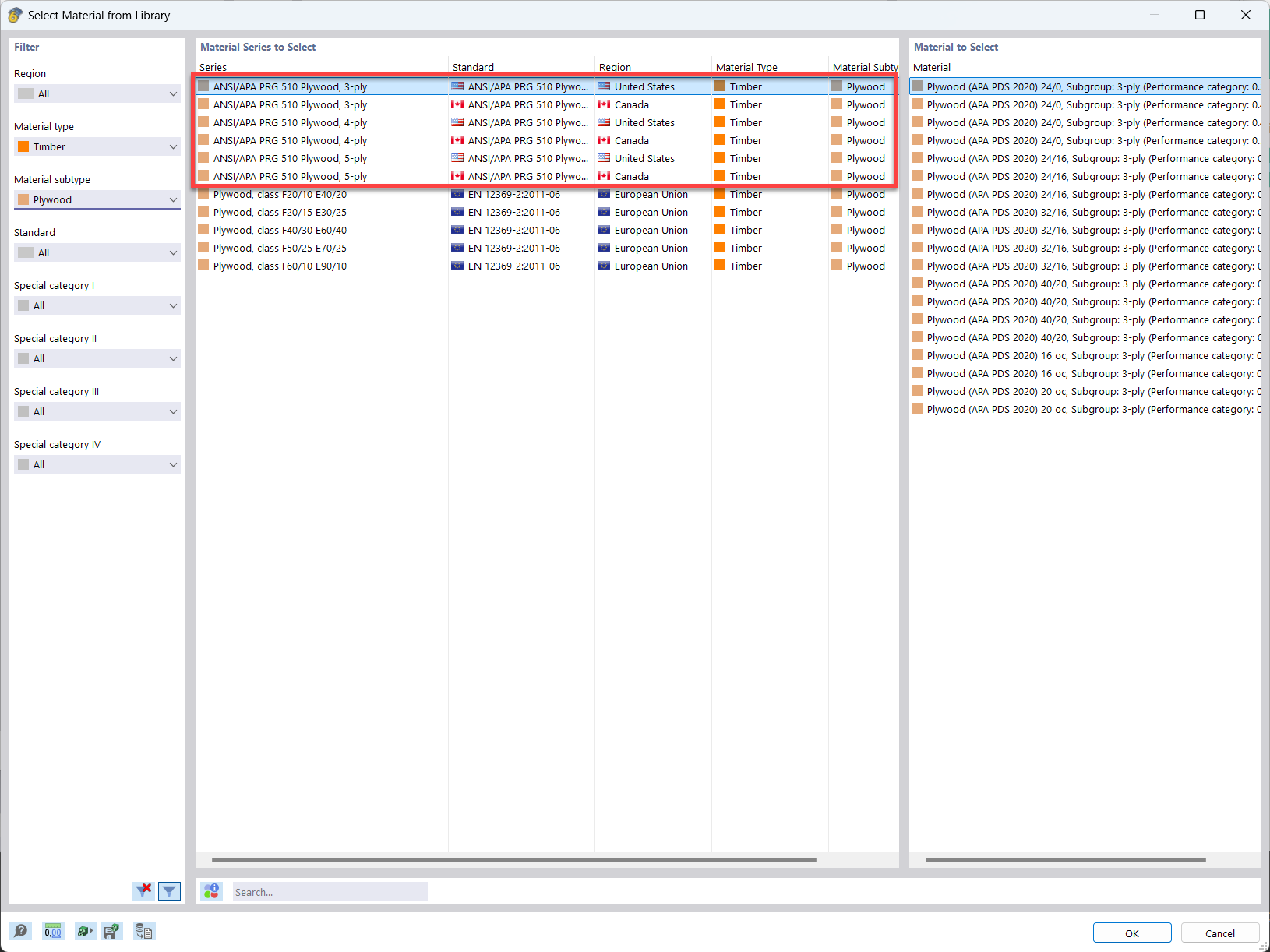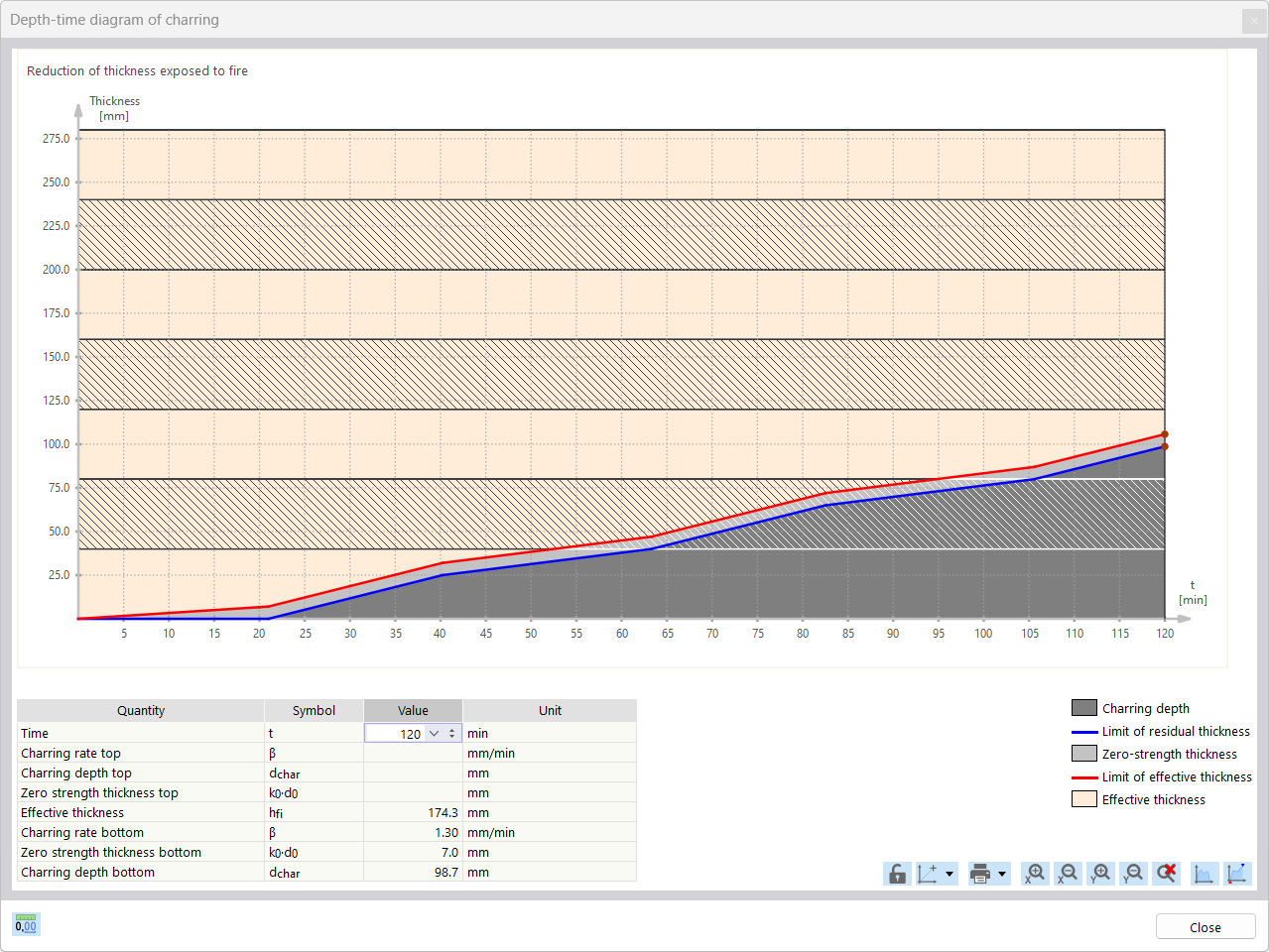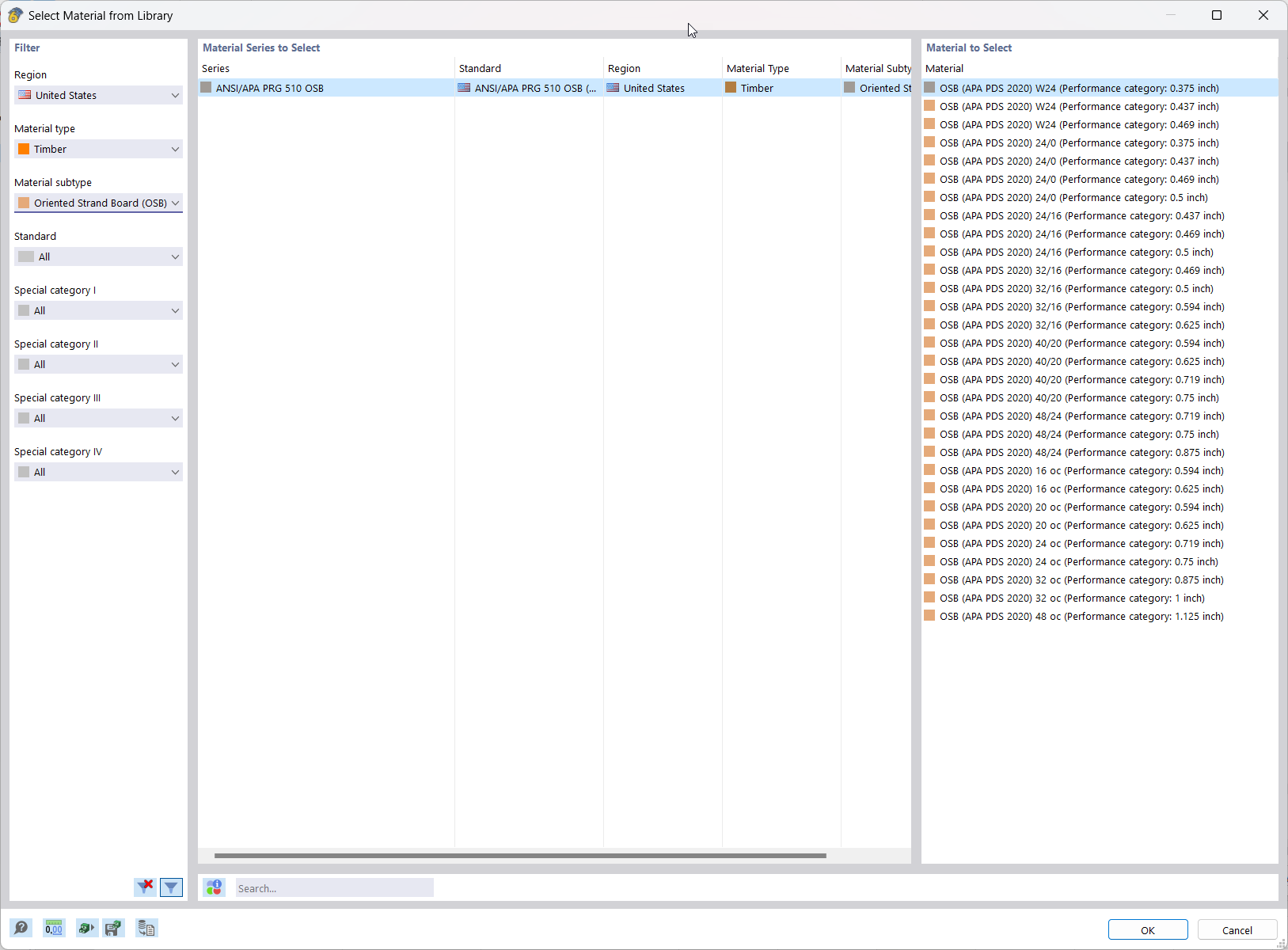From a structural point of view, this usually concerns hinged members, so the stability analysis should be performed as the equivalent member design. However, it is impossible with these boundary conditions, because EN 1993‑1‑1, Clause 6.3.3, allows only double-symmetric cross‑sections for members subjected to compression and bending.
In this case, RF‑/STEEL EC3 attempts to perform the analysis according to the General Method in compliance with Clause 6.3.4. However, this is also limited to certain shapes of cross‑sections, depending on the National Annex (for example, only I‑sections in Germany). Furthermore, the General Method does not take into account the design of buckling around the y‑axis, which represents the minor axis in the case of double angles.
Therefore, the analysis is usually performed as a cross‑section design with internal forces according to the second‑order analysis using imperfections. To do this, deactivate the stability analysis in the "Details" dialog box of RF‑/STEEL EC3; instead, select the "Use γM1 for determination of cross‑section resistances" check box in the "Ultimate Limit State" tab.
If you want to include the lateral-torsional buckling effect, enable the General Method for non I‑sections. You can adjust this setting under "National Annex".
In the case of diagonals with low slenderness, the best option is the equivalent member analysis according to Clause 6.3.1. To do this, it is necessary to change the member type to "Truss (only N)" in RFEM or RSTAB. In addition, the member must not include any imperfections.














































































.png?mw=600&hash=49b6a289915d28aa461360f7308b092631b1446e)